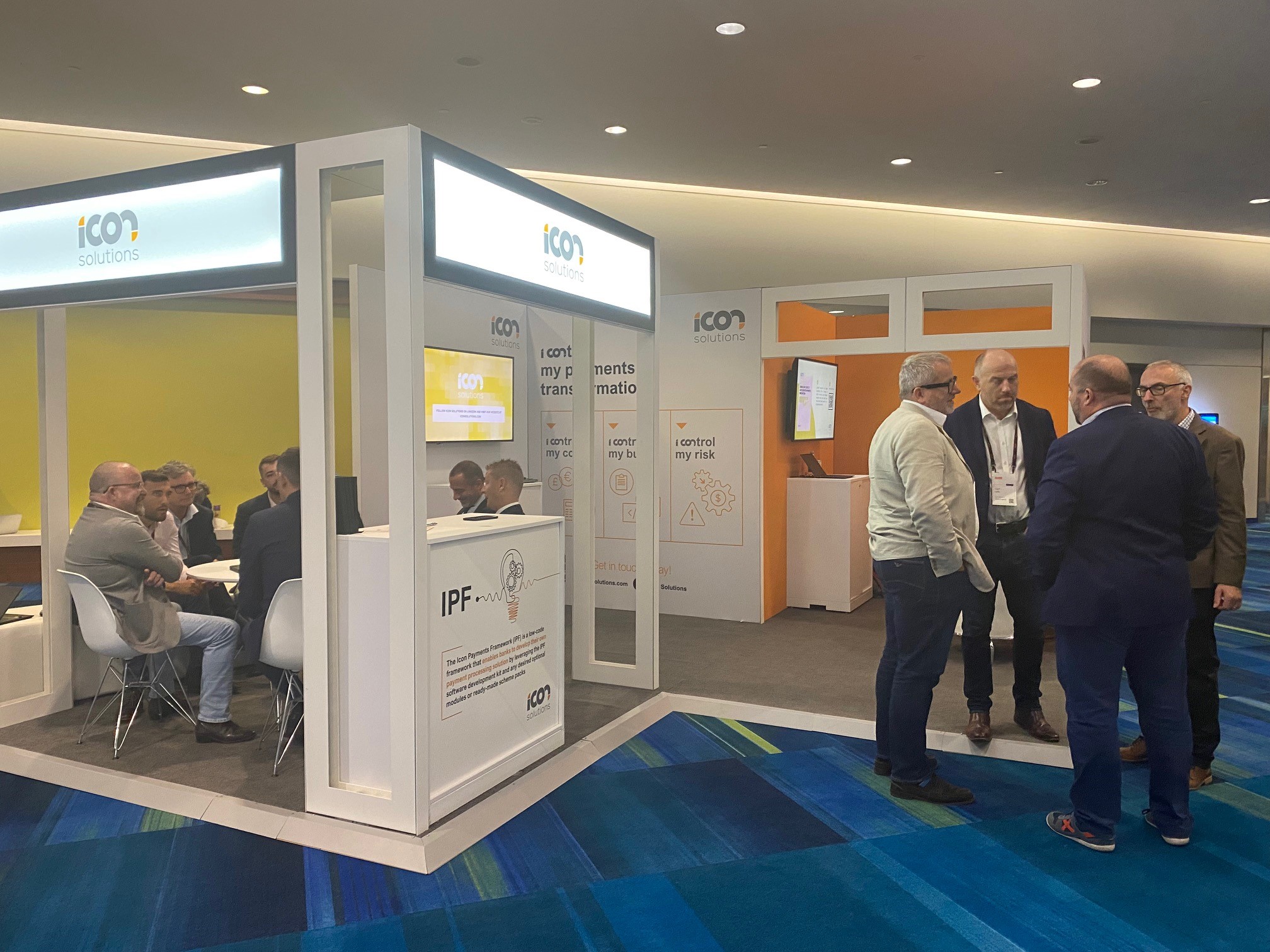Collaboration is the Key: Takeaways from Sibos 2023

By all measures, Sibos 2023 in Toronto was a great success. The event brought together more than 9,000 attendees to discuss this edition’s theme – ‘Collaborative finance in a fragmented world’. Rich and varied topics included ISO 20022 & real-time payments, Central Bank Digital Currencies (CBDCs), the use of AI in payments and a particular Icon favourite (see our recent blog here) low code.
RTP & ‘One-leg out’ payments
As expected, ISO 20022 was high on the agenda. Everyone agrees that adopting the new messaging formats needs to happen quickly. They also agree that significant and complex changes are needed to banks’ payments infrastructure.
This led to interesting discussions around ‘one-leg out’ payments. In this context, one-leg out payments could see domestic or regional infrastructures – such as the Single Euro Payments Area (SEPA), which currently only processes payments between accounts within the SEPA zone – opened up to support payments from and to banks from outside the zone.
Different infrastructures will be interconnected to work across countries and will significantly change how internal payments are be processed and settled, perhaps even the banking model as we know it. This change is already well underway and will continue to be a hot topic, but it remains to be seen if banks will resist or take a competitive approach to adoption. Our view is that banks seeking to get ahead of the curve and lower processing costs should move quickly to implement a comprehensive strategy.
CBDCs on the rise
CBDCs will also impact inter-bank clearing and settlement. It’s clear that CBDCs will result in a much more diverse payments space, which will in turn require payments systems to be more flexible. To demonstrate the importance of this topic, every Central Bank in the world is currently exploring implementations. For example, the European Central Bank (ECB) is projected to finalise its investigation phase at the end of October 2023. But how are banks approaching the shift?
In the current landscape, smaller banks will outsource associated CBDC functions to larger banks, meaning the larger banks need to make insourcing as attractive as possible. A tiered CBDC ecosystem would involve more diverse intermediaries, which may lead to unclear responsibilities and potential user disruption. As a result, stakeholders must work to ensure this service is as simple and consistent as possible.
With CBDCs set to be rolled out in the next few years, there will be a range of new schemes that will need to be adopted. This presents a unique opportunity for banks and open solutions will make it easier to adopt and adapt the required infrastructure.
AI in payments processing
Artificial intelligence has been part of global discourse since the beginning of 2023, and payments is no exception. One Sibos session delved into the use of AI to optimise Straight Through Processing (STP). The issue with STP is the continuing need for humans to make corrections. This human intervention incurs significant costs and banks are using AI to potentially halve the current error rate. This will increase the volume of STP payments and reduce overall processing costs.
Elsewhere, banks are also using AI to analyse data. Large language models are allowing users to collect and analyse data at speed. For example, asking an AI model “How many payments failed in the last week because of X reason”, can provide an instant and accurate answer. This can save time and ensure resources are directed effectively.
It’s safe to say AI is a priority for banks and will continue to be as the capabilities evolve.
What on earth is low code?
Numerous discussions around missed deadlines and opportunities all came back to the same industry challenge – the software developer capacity crunch. Independent research from Celent on behalf of Icon Solutions has even found that this has impacted bank’s revenues by 5% over the last two years. The skills gap will take time to close, but one approach gaining interest is the use of ‘low code’ tools and platforms to accelerate delivery while maintaining control of the dev process.
Low code is the use of domain specific languages to enable subject matter experts (without traditional coding skills) to define functionality via an intuitive UI and automatically generate the relevant executable code from it without the involvement of traditional developers. This enables software development with significantly less or no manual coding, acceleration of innovation and time-to-market and enabling non-technical product specialists within the bank to contribute to the development process. Keep an eye on this one!
Sibos was, once again, a fantastic event to be a part of and the above insights barely scratch the surface of discussions at the show! Payments processing remains one of the most dynamic areas in the banking industry with new opportunities constantly emerging. And for banks that are willing to collaborate on new models and approaches, innovation and growth for payments processing is within their grasp.